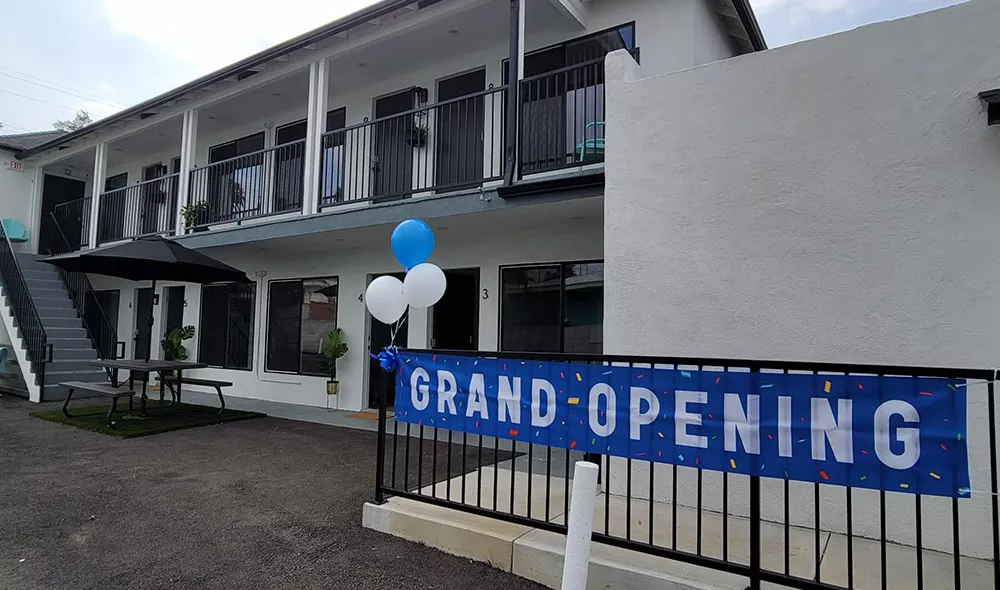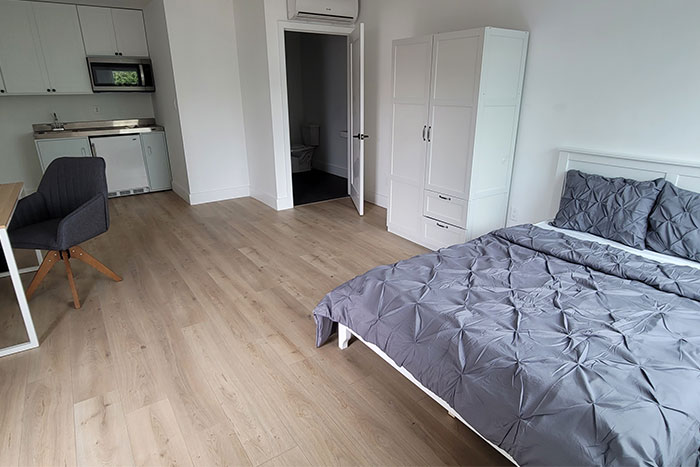Affordable for Youth Housing – The First Step in Ending Youth Homelessness

One of the most difficult challenges that youth overcoming homelessness face is finding affordable housing. Even our most successful Covenant House residents — those with jobs, savings, and a support network — may struggle to secure and maintain affordable housing. Many struggle to pay security deposits and even face discrimination due to their past homelessness.
Why is this a problem? Without access to stable, affordable housing, homeless youth can experience cycles of instability. This makes it harder to pursue further education, a career, and long-term well-being.
Guided by our North Star, to end youth homelessness as we know it today, Covenant House has a plan to promote, build, and manage affordable-for-youth housing to give young people overcoming homelessness a real chance at the life they aspire to.
What can we do to end youth homelessness as we know it today?
For over 50 years, Covenant House’s work has focused on our primary goal — helping every youth who comes to our doors who needs a warm meal, a safe place to sleep, and a place to find hope for their future. But after serving so many young people, we knew we had to do more. We have a unique view into youth homelessness — its causes and its effects on youth long-term. That’s why we envisioned The Journey Home, our road map for ending youth homelessness as we know it today.
The Journey Home is made up of three pathways, prevention, intervention, and restoration. In this article, we are focusing on the restoration pathway. This encompasses support for youth once they leave our program, including the challenge of affordable-for-youth housing. At Covenant House, we are leveraging our resources, partnerships, and expertise to expand affordable housing opportunities for young people transitioning out of our shelters and those in the larger community seeking to make it on their own.
What is affordable-for-youth housing?
Traditional affordable housing is usually defined in terms of Area Median Income (AMI), a metric established by the U.S. Department of Housing and Urban Development. Typically, anything below 70-80% AMI is considered “affordable.” But even at 50% AMI, rent remains out of reach for many young people in most U.S. cities, often exceeding 100% of what they make in a year. Covenant House redefine affordable-for-youth housing based on six core principles:
- Rents are set at about 33% of full-time household income, even at minimum wage.
- Living environments are independent, with no mandatory on-site support services.
- There is no enforced term limit, but the expected duration is three to five years.
- Spaces are clean, safe and dignified spaces and allow youth to thrive and focus on personal growth.
- A community-oriented environment fosters belonging and responsibility.
- Units are available to all youth who have faced homelessness and are not limited to youth previously served by Covenant House only.
Our Affordable-for-Youth Housing Model

In October 2023, Covenant House California opened Linden Commons as our first affordable-for-youth housing facility. Designed specifically for young renters, it features 12 studio apartments. In November 2024, CHC opened a second facility, Olive Tree Commons, a further demonstration of our commitment to identify and provide sustainable housing solutions for youth.
Our affordable-for-youth housing model fills the gap for youth who have exhausted all financial aid options and still cannot find decent, affordable housing. Here is how it works at Covenant House California’s Linden Commons.
1. Community Manager
A CHC alum in stable employment serves as an on-site community manager, receiving discounted rent in exchange for:
- Reporting maintenance issues.
- Assisting new residents.
- De-escalating disputes among residents in real-time
- Alerting CHC, and, if necessary, emergency services, to major incidents.
- Keeping up the property perimeter, including light duties such as watering plants.
- Helping residents who lose keys.
2. Property Management Support
CHC partnered with Starpoint Properties, which is owned by a CHC board -member, for in-kind property management services. Adjustments were made to standard commercial practices to accommodate CHC’s youth-first approach, including the following.
- Credit scores are used for financial education purposes, not eligibility.
- StarPoint provides one-on-one lease orientation with CHC staff.
- A retention policy allows grace periods for late payments. (To date, no resident has had to be evicted. One resident left voluntarily.)
3. CHC Staff Involvement
- Coordinate repairs and maintenance.
- Screen new tenants and review community rules and expectations.
- Assist with rent collection and payment plans.
- Address tenant disputes
- Organize community-building activities.
All residents have access to mental health services and meals at CHC’s main campus, located just a few miles (a short bus ride) from Linden Commons.
The Linden Commons model proves that affordable-for-youth housing is both feasible and sustainable when designed with youth-specific financial realities in mind. With a replicable blueprint, Covenant House is poised to scale this initiative, ensuring that young people transitioning out of homelessness have a stable foundation for success.
Help Young People Build Brighter Futures
Your gift helps ensure we can continue to provide services and support to young people on their journey toward sustainable independence and a hope-filled future.


